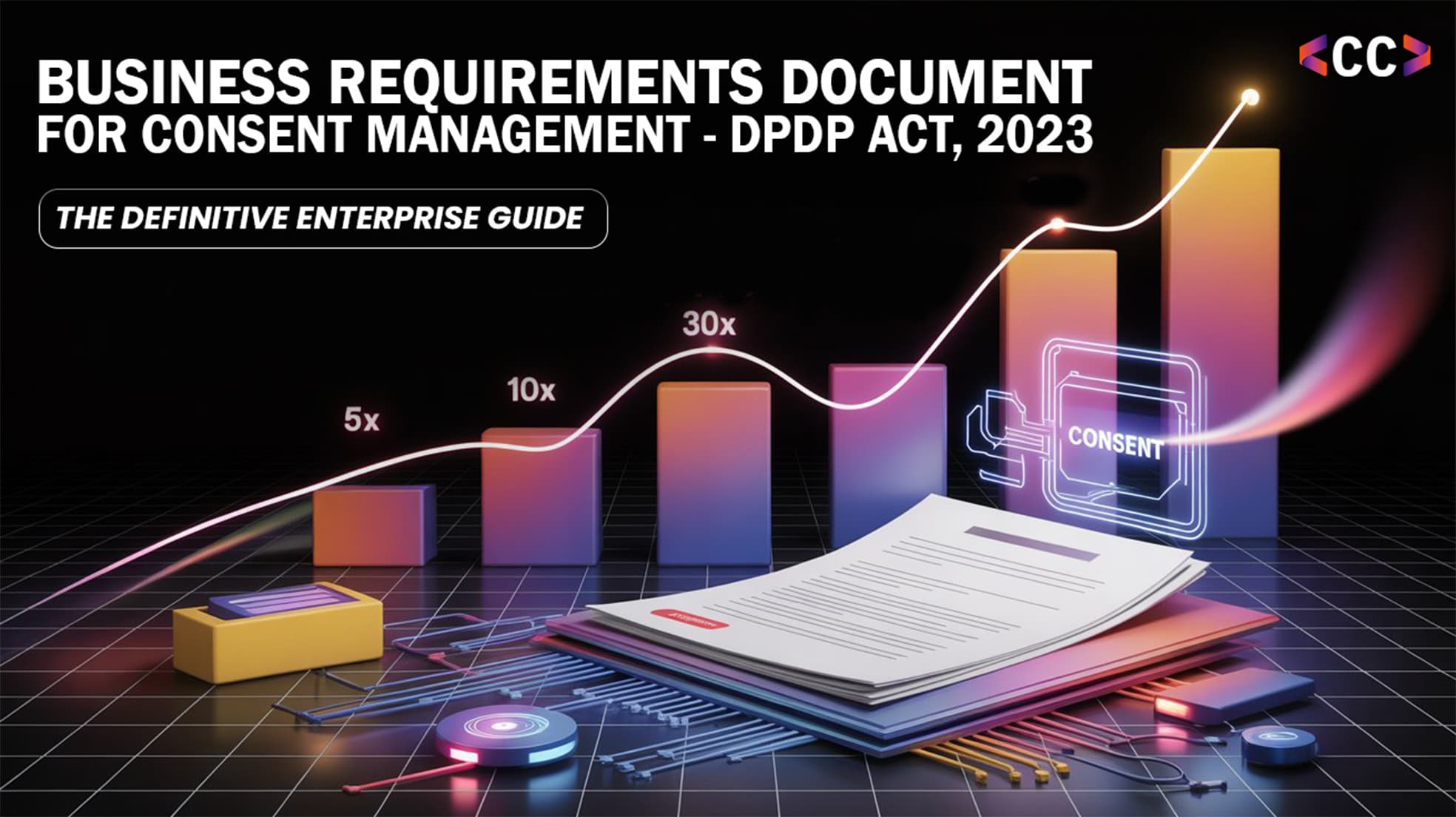Blockchain
3 months ago
Business Requirements Document for Consent Management Under the DPDP Act, 2023: The Definitive Enterprise Guide
Introduction
Navigating India’s Digital Personal Data Protection (DPDP) Act, 2023, isn’t just a compliance challenge—it’s an opportunity to modernize your enterprise’s data consent approach, win user trust, and future-proof business processes. The Ministry of Electronics and Information Technology (MeitY) has released a comprehensive Business Requirements Document (BRD), giving organizations a clear, actionable blueprint for building and deploying robust consent management systems (CMS). In this blog, you’ll find everything your enterprise needs: highlights from the official BRD, best practices, pitfalls to avoid, and—crucially—why blockchain-powered solutions like eAdhikar can set your business apart.
1. Introduction to DPDP Act and Consent Management
The DPDP Act, 2023 is India’s game-changing digital privacy statute, requiring organizations to collect, manage, and honor explicit, granular, and revocable user consent for all digital personal data. The Business Requirements Document (BRD) by MeitY is the technical and functional north star that defines how to operationalize these legal expectations inside real consent management systems.
2. What is the Business Requirements Document (BRD)?
The BRD sets out what your consent management solution should do—from the way you capture user permission to validation and enforcement, user visibility, and real-time audit logging. While not binding law, the BRD is widely seen as the de facto standard and blueprint for DPDP compliance, especially for enterprises preparing for Data Protection Board scrutiny.
3. Core Stakeholders in Consent Management
-
Data Principal: The individual whose personal data is processed.
-
Data Fiduciary: The organization deciding the “how” and “why” of processing.
-
Data Processor: Third parties managing data for the Fiduciary.
-
Consent Manager: A new, registered intermediary that empowers individuals to centrally manage, withdraw, or modify consent via an interoperable dashboard.
4. Key Objectives and Principles of the DPDP BRD
-
Explicit, granular, and purpose-based consent (no pre-checked boxes!).
-
Free, informed, unambiguous, and easily revocable.
-
Full user empowerment through a multilingual, accessible dashboard.
-
Data minimization and privacy by design in every system interaction.
-
Tamper-proof compliance evidence and real-time enforcement.
5. The Consent Management Lifecycle
Consent Collection – Transparent notices, multilingual, affirmative actions, metadata logging.
Consent Validation – Automated checks, audit logs, enforcement of purpose limitation.
Consent Update – Instant amendments, immutable records, synced across systems.
Consent Renewal – Automated reminders, simple audit trails.
Consent Withdrawal – Dashboard-based, instant halt, full logging, immediate notifications.
6. Functional Features Mandated by the BRD
-
Consent management dashboard.
-
Real-time notifications.
-
Self-service grievance redressal.
-
Tamper-proof, auditable logs.
-
Purpose-specific consent toggles.
-
Accessibility and multilingual support.
7. Technical, Security, and Interoperability Requirements
-
Encryption for data at rest and in transit.
-
Role-based access controls.
-
Standardized APIs for CRMs, ERPs, apps.
-
Data localization compliance.
-
High-availability, scalable infrastructure.
8. Real-time Auditability and Compliance
-
Immutable audit logs.
-
Automated multi-actor notifications.
-
Exportable compliance snapshots.
9. Accessibility, Multilingualism, and Inclusive UX
-
Dashboards in major Indian languages.
-
WCAG-compliant accessibility.
-
Clear, jargon-free interfaces.
10. Integration with Enterprise Systems
-
Modular, plug-and-play with CRMs, ERPs, apps.
-
Test sandboxes.
-
Scalable infrastructure.
11. Role of Consent Managers: Obligations and Registration
-
Must register with the Data Protection Board.
-
Meet technical, operational, and financial standards.
-
Provide interoperable, auditable, user-friendly platforms.
12. Grievance Redressal and User Empowerment
-
Built-in complaint mechanisms with SLAs.
-
Full logs for every grievance.
-
Transparent escalation process.
13. Advanced Compliance: Leveraging Blockchain (eAdhikar Case Study)
eAdhikar is an example of a next-gen consent platform purpose-built for the DPDP regime:
-
Immutable blockchain records: Every consent cryptographically sealed.
-
Real-time smart contracts: Consent changes enforced instantly.
-
Multi-language & accessible dashboards: User-friendly and inclusive.
-
Easy enterprise integration: CRMs, ERPs, apps.
-
Audit-ready logs: Simplified compliance for regulators.
Choosing a platform like eAdhikar helps enterprises not just meet but exceed BRD requirements, streamlining audits and boosting customer trust.
14. Implementation Best Practices for Enterprises
-
Map data collection points and revise consent flows.
-
Upgrade to API-friendly, automation-driven platforms.
-
Train staff on DPDP standards and user rights.
-
Pilot with platforms like eAdhikar for seamless transition.
Key Takeaways
-
DPDP Act + BRD mandate granular, revocable consent.
-
Requirements: dashboards, audit logs, notifications, withdrawal/renewal.
-
Platforms like eAdhikar ensure compliance and trust.
-
Multilingual, accessible, scalable solutions are must-have.
-
Early adoption = regulatory confidence + customer trust.
FAQs
Is using a Consent Manager mandatory under DPDP?
Yes, enterprises must implement a DPDP-aligned CMS—either by registering or partnering with a Consent Manager.
How do I ensure audit-ready compliance with DPDP Act?
Adopt a platform like eAdhikar for tamper-proof record-keeping, instant withdrawal enforcement, and exportable reports.
What makes eAdhikar different from traditional CMS platforms?
eAdhikar leverages blockchain for immutable records, smart contracts for real-time consent enforcement, and multilingual UX—exceeding DPDP/BRD standards.
What happens if a user withdraws consent?
The system must halt processing instantly, reflect changes across systems, and log every step.
Can eAdhikar integrate with my ERP or CRM?
Yes—its API-first design and connectors allow smooth, disruption-free integration.
Conclusion
With data privacy at the forefront of digital transformation, the DPDP Act and BRD have made robust consent management a legal and strategic imperative. Aligning your system with the BRD isn’t just about avoiding penalties; it’s about building trust, agility, and a competitive edge. Future-ready platforms like eAdhikar give enterprises the confidence to meet—and exceed—India’s toughest compliance benchmarks, unlocking better user experiences and easier audits.

